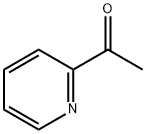| Identification | CAS.No.: 1122-62-9 FL.No.: 14.038FEMA.No.: 3251NAS.No.: 3251CoE.No.: 2315EINECS.No.: 214-355-6 JECFA.No.: 1309 |
| Description | A colorless liquid with tobacco-like aroma. |
| Regulatory Status | CoE: Used provisionally. Food: 10 ppm
FDA: n/a
FDA (other): n/a
JECFA: ADI: Acceptable. No safety concern at current levels of intake when used as a flavoring agent (2004). |
| Usage | Reported uses (ppm): (FEMA, 1994)Food Category Usual Max Baked goods 55Breakfast cereals 33Cheese 33Gravies 33Meat products 33Milk products 33Other grains 33Soft candy 33Soups 33 |
| Natural occurrence | Reported found in wheaten bread, other types of breads, boiled and cooked beef, grilled and roasted beef, lamb (roasted), lamb and mutton liver, beer, several types of brandy, cocoa, black tea, roasted filbert (Corylus avellano), roasted peanut (Arachis hypogea), heated beans, Bantu beer, coriander seed (Coriandrum sativum L.) and other natural sources. |
| Production | It is obtained by bromination of ethylpyrazine, followed by oxidization to obtain it. |
| Chemical Properties | A colorless liquid with tobacco-like aroma |
| Chemical Properties | clear colorless to slightly brown liquid |
| Occurrence | Reported found in wheaten bread, other types of breads, boiled and cooked beef, grilled and roasted beef, lamb (roasted), lamb and mutton liver, beer, several types of brandy, cocoa, black tea, roasted filbert (Corylus avellano), roasted peanut (Arachis hypogea), heated beans, Bantu beer, coriander seed (Coriandrum sativum L.) and other natural sources. |
| Uses | 2-Acetylpyridine used as flavoring agent. It is also used in application for food additive. |
| Uses | 2-Acetylpyridine is an aroma and flavour compound present in foods. |
| Definition | ChEBI: 2-Acetylpyridine is an aromatic ketone. |
| Preparation | From ethyl picolinate |
| Aroma threshold values | Detection: 19 ppb |
| Taste threshold values | Taste characteristics at 10 ppm: cornmeal with nutty, bready nuance |
| General Description | 2-Acetylpyridine is a volatile flavor compound found in rye bread crust and roasted sesame. It has also been identified as a key contributor to the “scented rice”-like aroma in Yahonkaoluo leaves and Xiangjing-8618 rice. |
